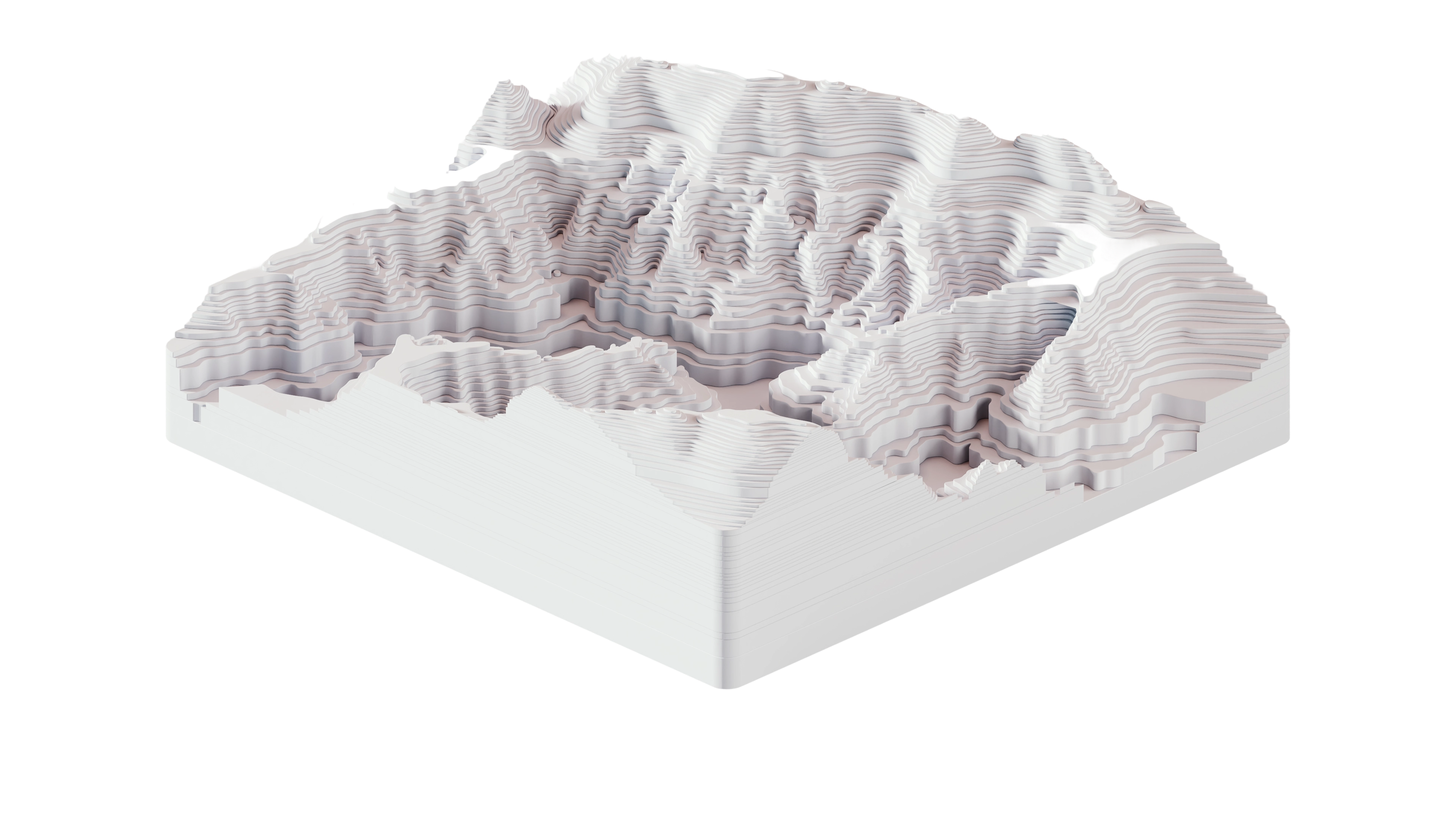The Navigation System for Work
Interloom helps you map how your teams actually work. Grounded in this precedent, it guides your operational teams with suggested next steps and relevant context and empowers your AI agents to follow their lead.
.webp)
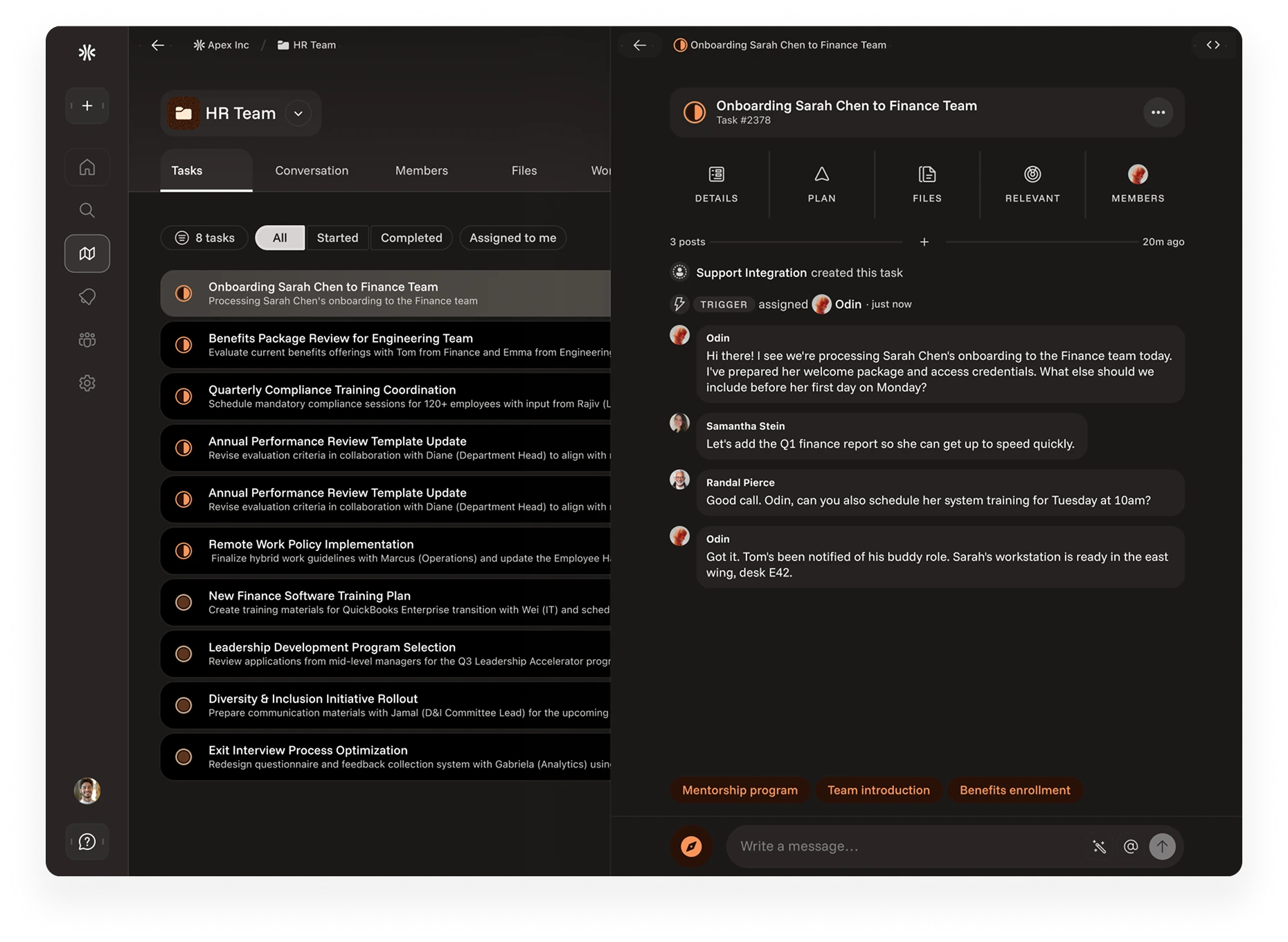


Undocumented Knowledge
Over 70% of work happens in silos, scattered across tools, chats, and meetings. Tasks get done, but knowledge is lost: undocumented, unstructured, and difficult to access.


”A significant portion of our organization’s expertise and solutions resides in emails, documents, and conversations. We aimed to fully capture the complexity of our diverse casework and processes to make this valuable knowledge easily accessible to our teams. With Interloom, we’ve successfully leveraged insights from previously resolved cases, enabling us to achieve better outcomes and solve problems faster than before.”
A Workspace That Learns
Current software isn’t built to learn, so it can’t adapt to how your teams actually work. Interloom does. It captures your real workflows, understands objectives, guides with context, and lets you deploy agents to automate work following your example.
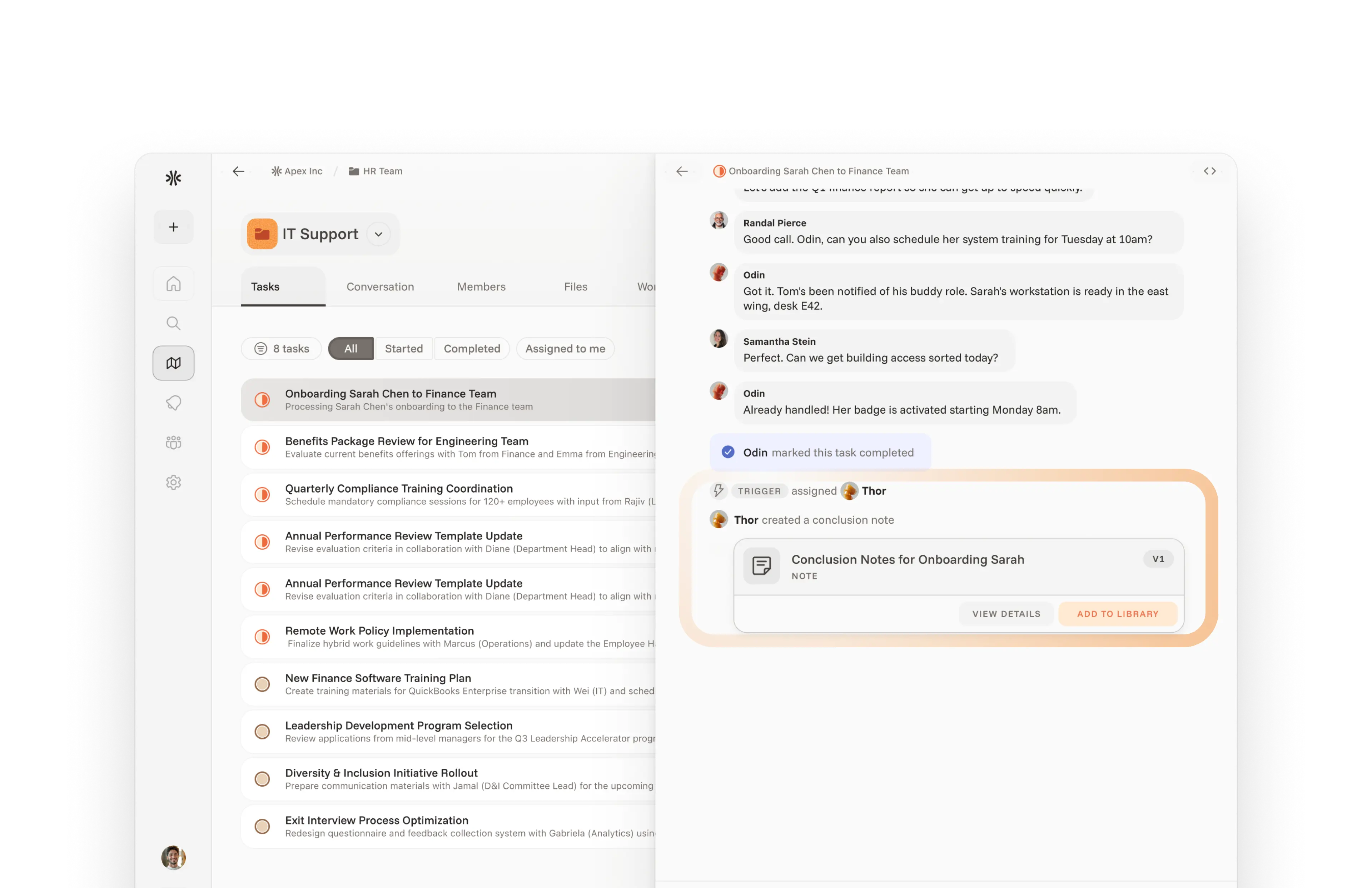

.webp)
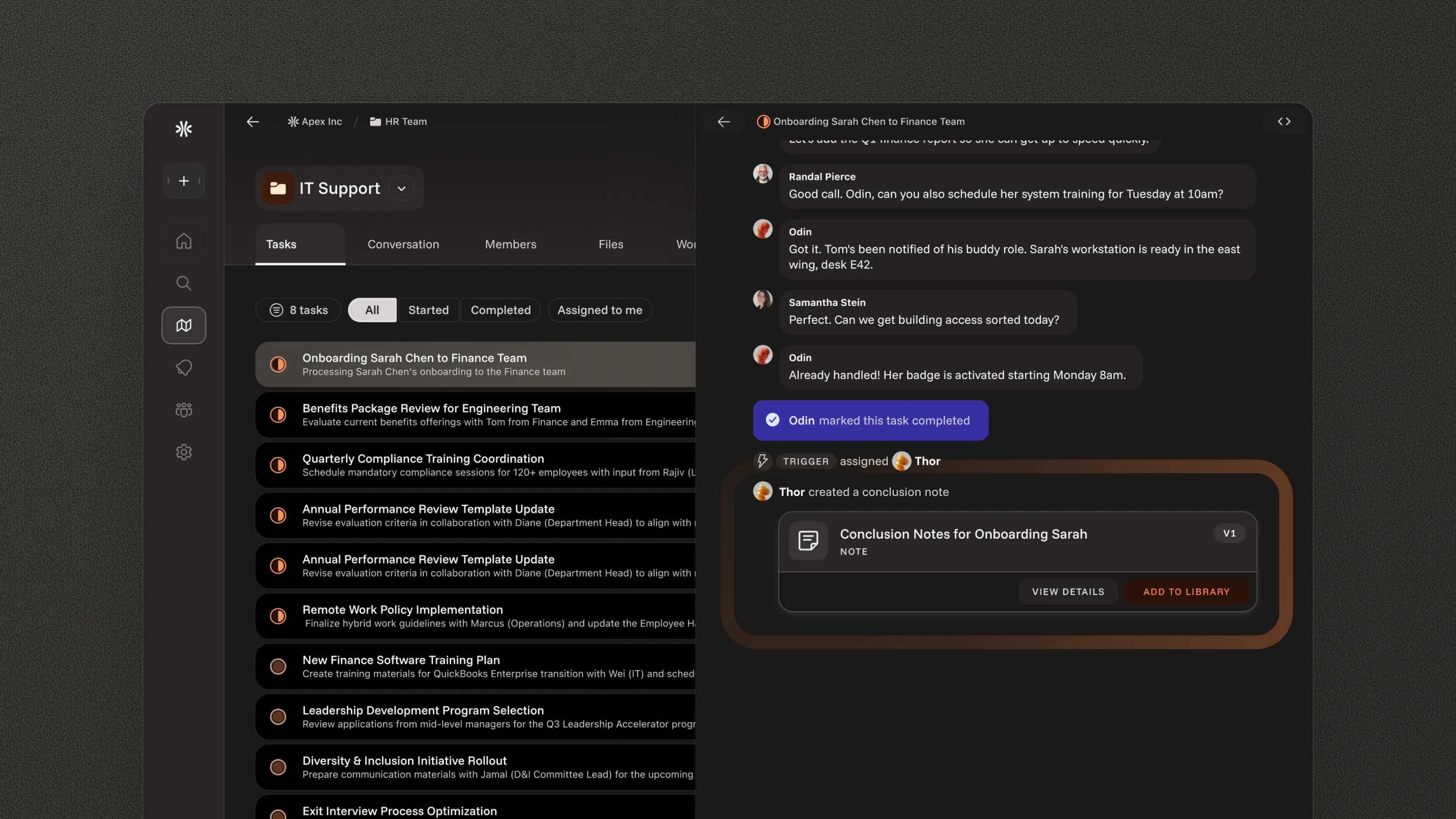
The workspace learns how tasks are solved by analyzing your documentation, emails, tickets, conversations, and real-time workflows.
Whether SOP or escalation, it transforms the information into structured, reusable knowledge.
Once the workspace learns how your teams work, it helps you delegate routine tasks to AI agents. These agents follow your work patterns with the right context and intent, stepping in where useful and deferring when human judgment matters.
Deploy Reliable AI, Today
Agents working alongside your team need clear reporting lines, feedback, and evaluation. Interloom provides an enterprise-ready platform that supports exactly that, driving measurable results from day one - always with an expert in the loop.
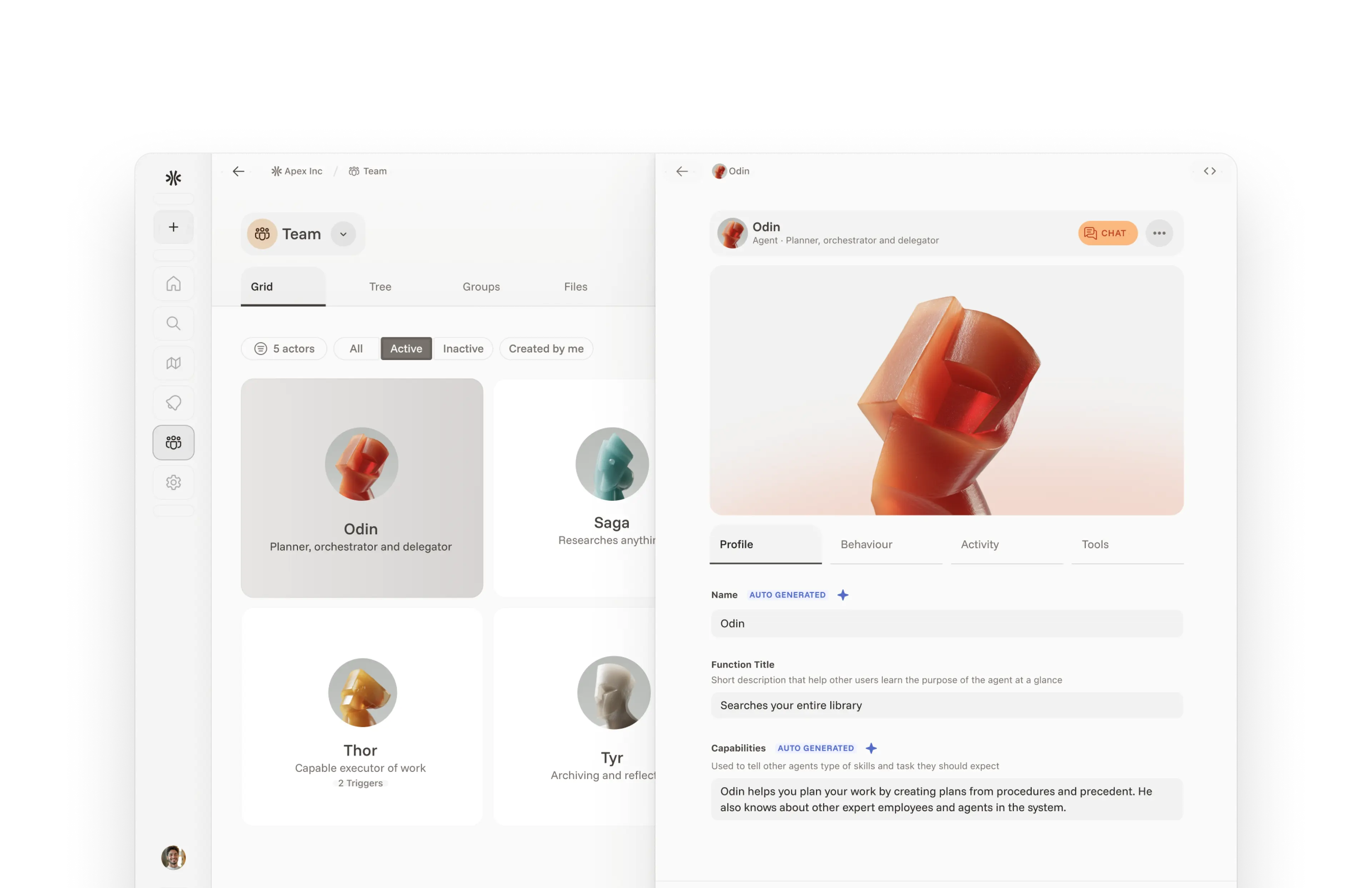
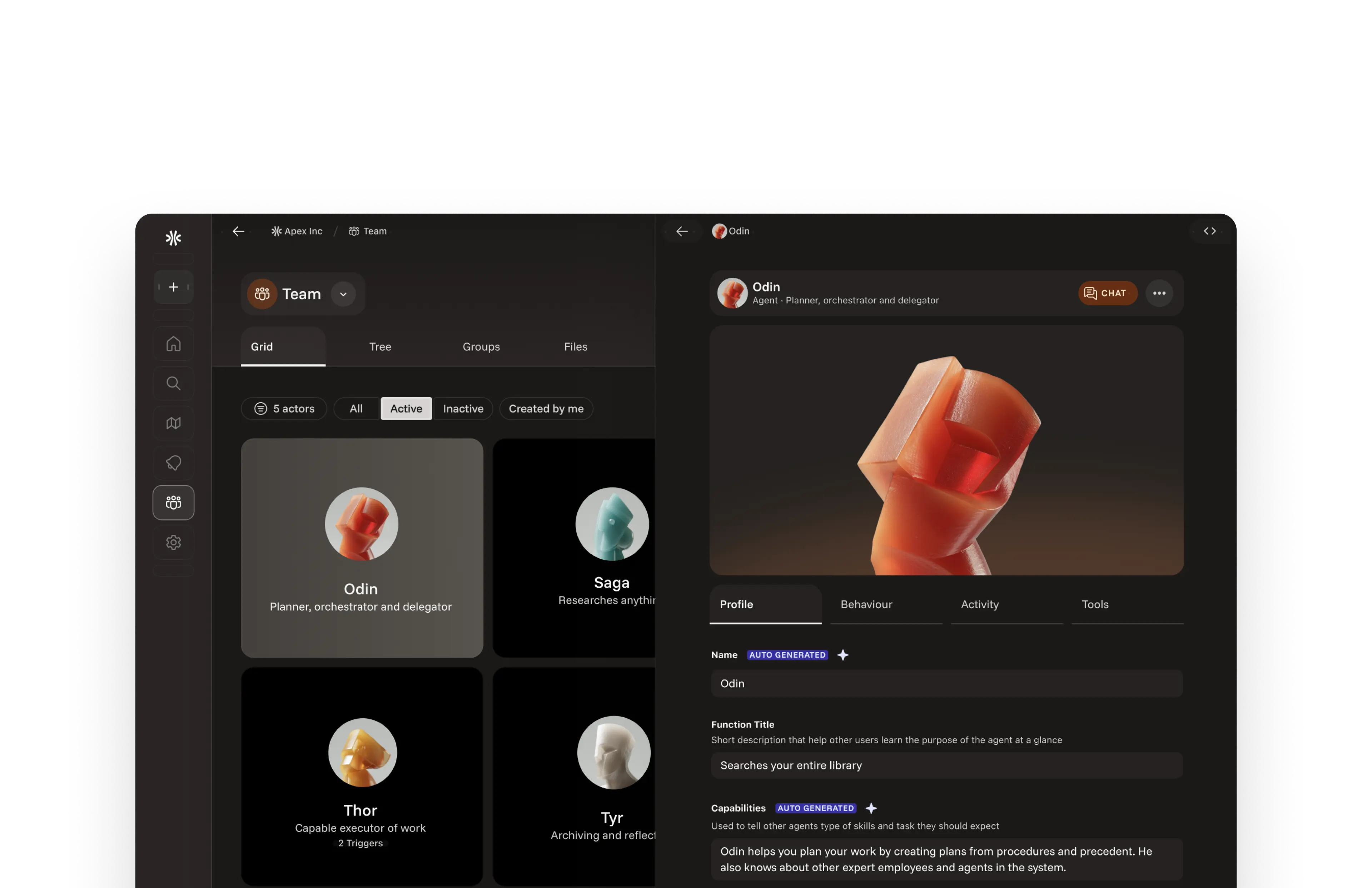
.webp)
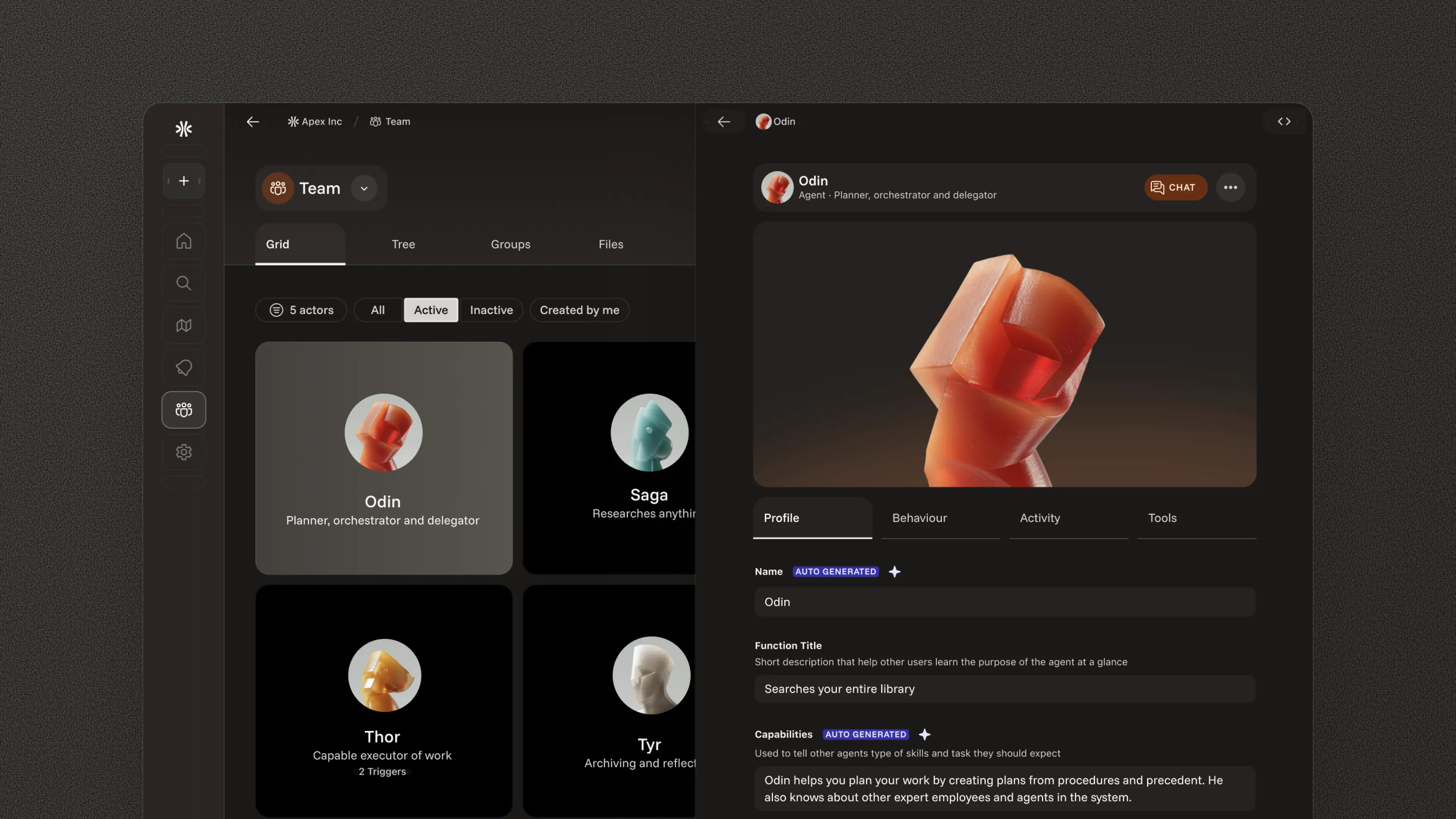
Interloom is built for seamless enterprise integration and deployment, designed to meet the highest enterprise standards.
With SAML and OpenID Connect SSO, we support flexible mapping of identity provider groups (such as Active Directory) to roles and permissions across Instances, Workspaces, Reporting Lines, and Groups.


Built For Operators Across All Teams
Interloom is designed for a world where work is messy, workflows are fluid, and no two teams move the same.
IT Service Management
Resolve incidents, manage changes, and route service requests; fast and intelligently.
Claims Management
Streamline claims from intake to resolution with guided triage and real-time tracking.
Customer Support
Respond faster to inquiries, resolve issues, and surface the right info at the right moment.
Pricing & Offer Creation
Build smarter quotes - verify pricing, manage approvals, and stay compliant.
Supplier & Vendor Management
Onboard vendors, track performance, and handle escalations; all in one flow.
Quality & Compliance
Catch issues early, guide corrective actions, and stay audit-ready.
Get Your Own Interloom Workspace
Navigate Work - Smarter, Faster
